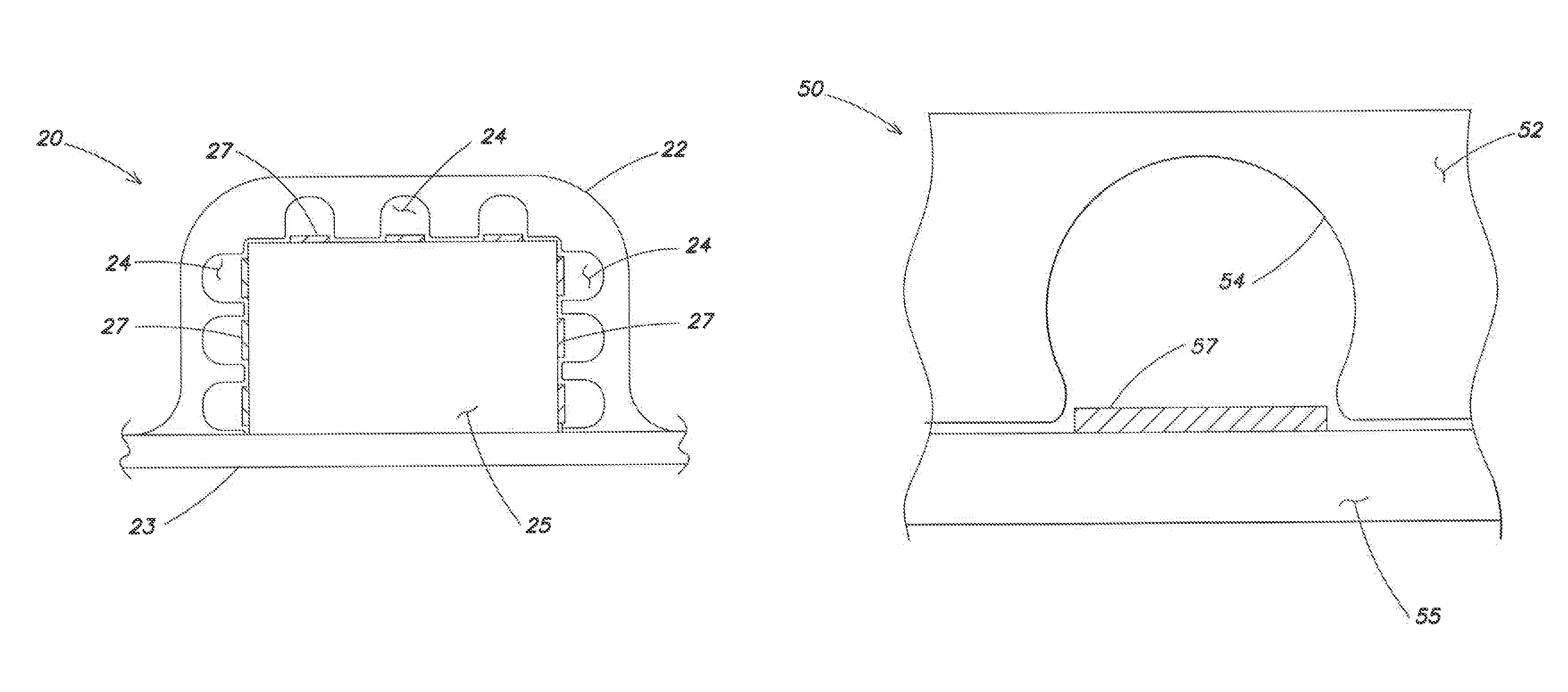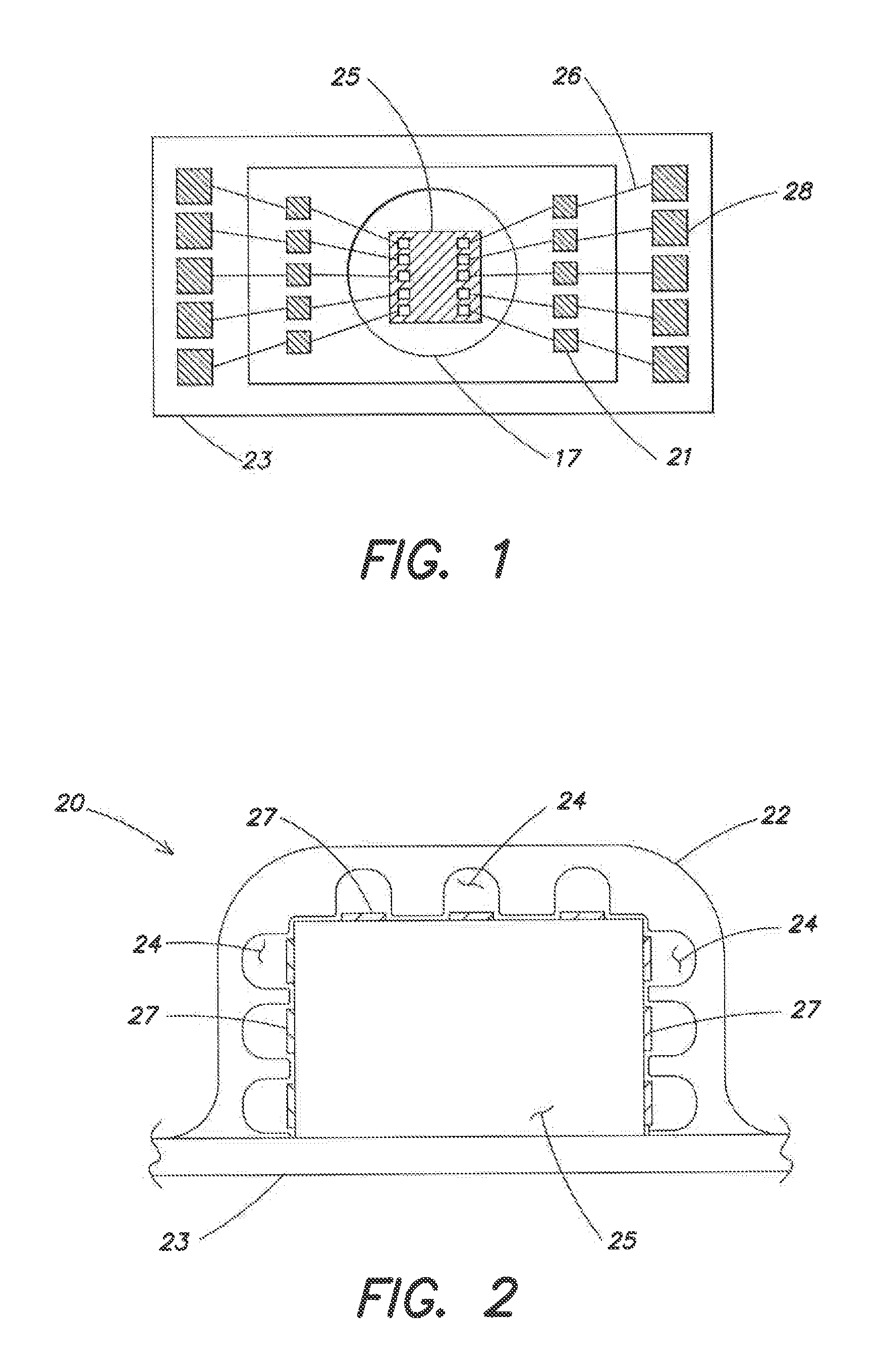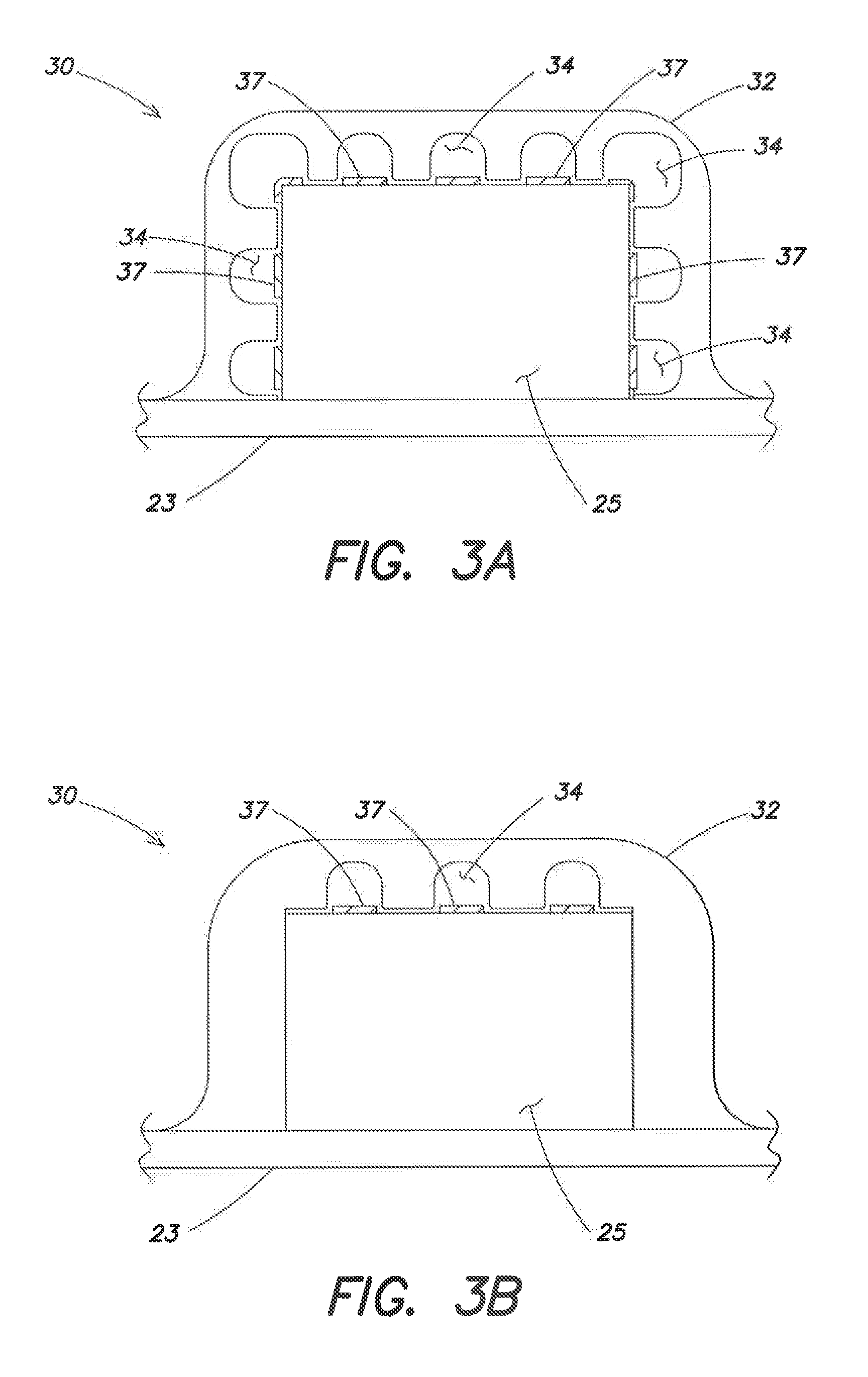MEMS devices anti-stiction coating and encapsulant having opposing water resitive characteristics
a technology of anti-stiction coating and encapsulation, which is applied in the direction of coating, microstructural device, microstructural device, etc., can solve the problems of affecting the performance of the mems sensor or transducer located within the mems device, and disclose the way to protect the mems devi
- Summary
- Abstract
- Description
- Claims
- Application Information
AI Technical Summary
Benefits of technology
Problems solved by technology
Method used
Image
Examples
Embodiment Construction
[0019]MEMS devices, in particular capacitive devices like gyroscopes, accelerometers, microphones, pressure sensors and combinations thereof, are susceptible to having their performance compromised by externally induced strains. This is due, in part, because there are typically very small air gaps, on the order of 100's of nanometers in BAW devices, and micrometers in other devices, that will change when then the structures defining them are moved with respect to each other. The external strains may be introduced by a number of methods. One for example is the thermal mismatch between the device and the board to which it is mounted and also the solder or adhesive used to achieve such attachment. Such mismatch results in a warpage of the MEMS package, and, hence, an induced strain in all bodies in the system. Another source of strain is that which is incurred during the assembly of the MEMS device. In this scenario, the MEMS sensor, and the surrounding housing / package, along with adhe...
PUM
| Property | Measurement | Unit |
|---|---|---|
| Hydrophilicity | aaaaa | aaaaa |
| Hydrophobicity | aaaaa | aaaaa |
| Stress optical coefficient | aaaaa | aaaaa |
Abstract
Description
Claims
Application Information
 Login to View More
Login to View More - R&D
- Intellectual Property
- Life Sciences
- Materials
- Tech Scout
- Unparalleled Data Quality
- Higher Quality Content
- 60% Fewer Hallucinations
Browse by: Latest US Patents, China's latest patents, Technical Efficacy Thesaurus, Application Domain, Technology Topic, Popular Technical Reports.
© 2025 PatSnap. All rights reserved.Legal|Privacy policy|Modern Slavery Act Transparency Statement|Sitemap|About US| Contact US: help@patsnap.com



